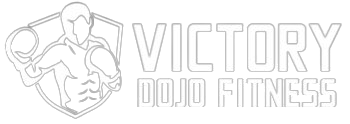 Yoshiji Soeno founded Shidokan (it’s name coming from the shinsengumi who protected the shogun). Early in his life Soeno joined the Oyama Dojo, the original Kyokushin Dojo headed by Mas Oyama himself.
Yoshiji Soeno founded Shidokan (it’s name coming from the shinsengumi who protected the shogun). Early in his life Soeno joined the Oyama Dojo, the original Kyokushin Dojo headed by Mas Oyama himself.
The History
That presence of grappling also means that in addition to the sort of knuckle push ups, squats and stance training you would expect from karate, we also see wrestlers bridges. Japanese martial arts training borrows a lot from catch wrestling, which in turn borrows its training practises from Indian wrestling, so the presence of hindu squats and push ups and those wrestling bridges isn’t all that surprising. It allows for ease of mobility and strength while on the ground.Related Articles Around the WebHis time in Kyokushin saw him earn the World Open Kyokushin Knockdown Championship and while in University he opened his own Dojo, where he would teach both karate and kickboxing. Keni Kurosaki, the godfather of kickboxing in Japan, was an older student of Mas Oyama’s and by this time was already running the Mejiro Gym and coaching world champions. Kickboxing had been embraced by Kyokushin practitioners in a real way. Like other prominent Kyokushin practitioners, Soeno would head out to Thailand to test his skills against Thai Boxers to mixed success.Shidokan, is different in that it has a wholly unique ‘triathlon’ approach to competition. One round will be competed under knockdown rules, then there will be a round of kickboxing, and then around of both striking and grappling akin to MMA. While the mere inclusion of an MMA round serves to make the first two rounds redundant, it still produces an undeniably well rounded competitor ad most martial arts that focus on both striking and grappling (sambo, sanda and kudo as examples) do.Eddie Yoshimura, then president of the US Shidokan association, and Chicago PD officer, would talk to Soeno and work to add arresting methods into the style and further round out the styles grappling. Allowing for Shidokan to be practical not just for sport fighting, but for self defence. It wasn’t enough to be good at Kyokushin competition when you would be dealing with gang members that you would have to physically restrain and arrest as opposed to simply knocking out.
What is training like?
Shidokan would continue to develop past this point, it’s unique among karate styles in that it has at the time of writing, a living, breathing master and founder who has allowed for the style to change as new revelations about fighting have been made.From Your Site ArticlesThe truth is that pressure and competition rules, not philosophy, is what ultimately shapes a martial arts style. Shotokan karate features elbows, but you never see them, because they’re not encouraged in competition, meanwhile Muay Thai is elbow city, because there is pressure to use them under a ruleset. This is why most karate styles can largely be grouped under one of these three types despite countless ‘styles’ of karate, which proport to be wholly separate martial arts.Finally, we have knockdown styles which take the tough body conditioning of Okinawan styles, and the kicks of point based styles and combine the two. Knockdown styles have their roots in Kyokushin, and most other styles of knockdown karate are simply rebranded Kyokushin with a slightly different philosophical approach to fighting, that mostly results in the same end result. Ashihara, World Oyama Karate and Kudo all have their roots in Kyokushin, but with the exception of Kudo and it’s wildly different competition format, it’s hard to argue that they’re not essentially doing the same thing.Due to the multifaceted nature of Shidokan, training sessions can differ wildly from lesson to lesson, some days will resemble classic Kyokushin training, doing kata, body conditioning, knockdown sparring etc. Other days will resemble kickboxing classes, using Thai pads and boxing gloves, or a class dedicated to grappling.



